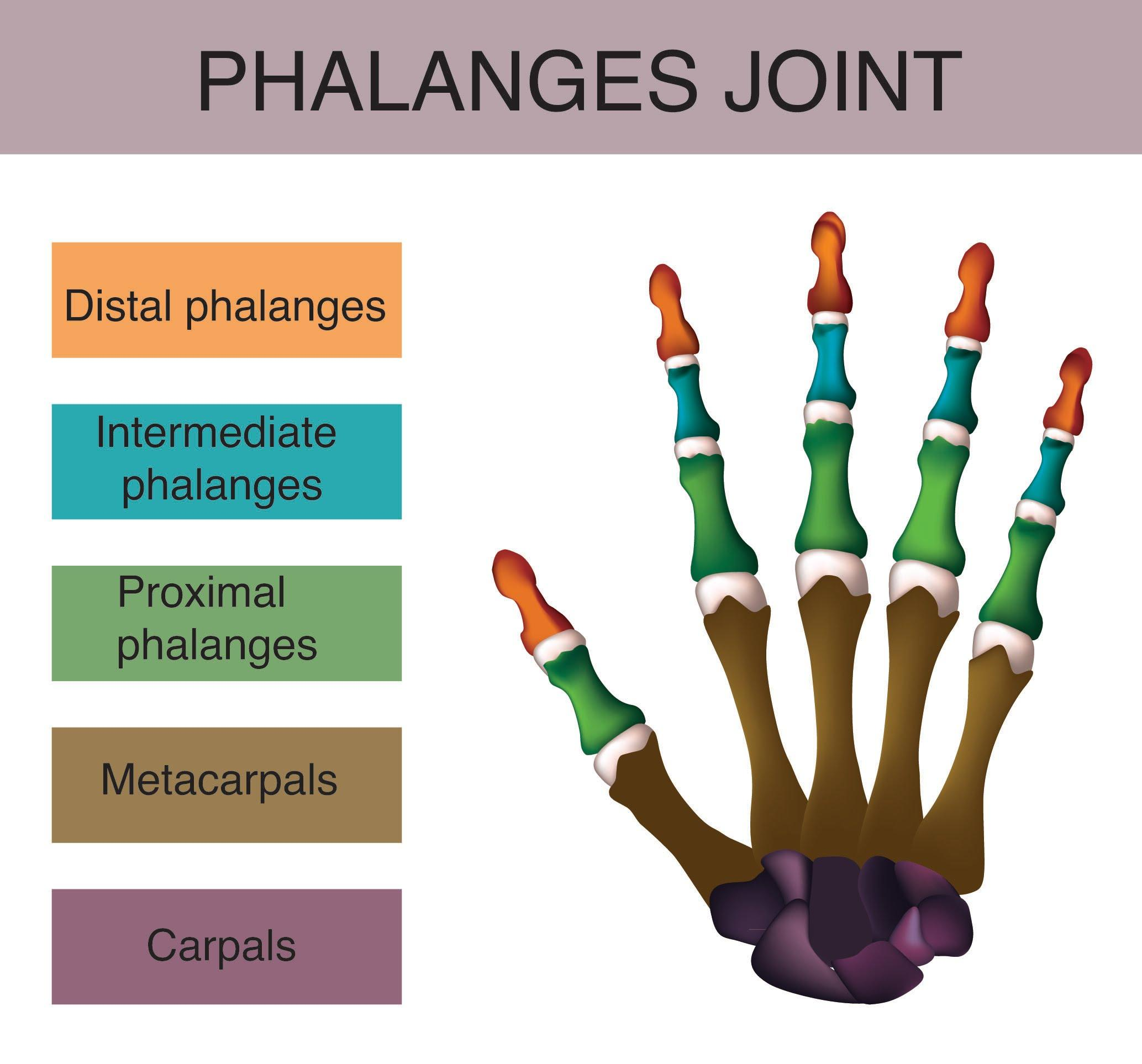
Name the type of joint between phalanges.
Answer
492k+ views
Hint: One type of synovial joint is present between the phalanges. The hip, elbow, and knee joints are part of this sort of joint. In such a way that the movement takes place only in one plane, the articular surfaces of this joint are moulded.
Complete step by step answer:
The type of joint present between the phalanges is a hinge joint. Between two or more bones, hinge joints are formed where the bones can only travel along one axis to bend or stretch.
Interphalangeal joints located between the phalanges of the fingers and toes are the simplest hinge joints in the body. The bones are able to bend in these hinge joints to decrease the angle between them, such as when forming a fist or curling the toes, and stretch to increase their angle when keeping the foot or hand flat to around 180 degrees.

The joints which link our fingers together are interphalangeal joints. This may be some of the human body's most significant hinge joints, considering how often we use our hands on every given day. Our hands contain three sets of joints.
Between the hand and the beginning of each digit, the metacarpophalangeal joints that are hinge joints are present.
The proximal interphalangeal joints are the joints between the first and second phalanges, or finger bones. There is great lateral flexibility in this joint.
The distal interphalangeal joints between the second and third phalanges, or finger bones, are hinge joints. The ones nearest to the tips of the fingers are these joints.
The bones that make up the digits of the hand and toes of the foot are the phalanges. In the human body, there are 56 phalanges, with fourteen on each hand and foot. With the exception of the thumb and the broad toe, which have just two, the other finger and toe have three phalanges.
Note: The relation between the bones in the body that links the skeletal system into a completely functional one is a joint or articulation. The knee is the biggest and most complex hinge joint in the human body, located between the femur of the leg and the tibia and fibula of the lower leg. The knee has grown to be incredibly strong and resilient while retaining the wide range of movement needed for locomotion.
Complete step by step answer:
The type of joint present between the phalanges is a hinge joint. Between two or more bones, hinge joints are formed where the bones can only travel along one axis to bend or stretch.
Interphalangeal joints located between the phalanges of the fingers and toes are the simplest hinge joints in the body. The bones are able to bend in these hinge joints to decrease the angle between them, such as when forming a fist or curling the toes, and stretch to increase their angle when keeping the foot or hand flat to around 180 degrees.

The joints which link our fingers together are interphalangeal joints. This may be some of the human body's most significant hinge joints, considering how often we use our hands on every given day. Our hands contain three sets of joints.
Between the hand and the beginning of each digit, the metacarpophalangeal joints that are hinge joints are present.
The proximal interphalangeal joints are the joints between the first and second phalanges, or finger bones. There is great lateral flexibility in this joint.
The distal interphalangeal joints between the second and third phalanges, or finger bones, are hinge joints. The ones nearest to the tips of the fingers are these joints.
The bones that make up the digits of the hand and toes of the foot are the phalanges. In the human body, there are 56 phalanges, with fourteen on each hand and foot. With the exception of the thumb and the broad toe, which have just two, the other finger and toe have three phalanges.
Note: The relation between the bones in the body that links the skeletal system into a completely functional one is a joint or articulation. The knee is the biggest and most complex hinge joint in the human body, located between the femur of the leg and the tibia and fibula of the lower leg. The knee has grown to be incredibly strong and resilient while retaining the wide range of movement needed for locomotion.
Recently Updated Pages
Master Class 9 General Knowledge: Engaging Questions & Answers for Success

Master Class 9 English: Engaging Questions & Answers for Success

Master Class 9 Science: Engaging Questions & Answers for Success

Master Class 9 Social Science: Engaging Questions & Answers for Success

Master Class 9 Maths: Engaging Questions & Answers for Success

Class 9 Question and Answer - Your Ultimate Solutions Guide

Trending doubts
State and prove Bernoullis theorem class 11 physics CBSE

What are Quantum numbers Explain the quantum number class 11 chemistry CBSE

Who built the Grand Trunk Road AChandragupta Maurya class 11 social science CBSE

1 ton equals to A 100 kg B 1000 kg C 10 kg D 10000 class 11 physics CBSE

State the laws of reflection of light

One Metric ton is equal to kg A 10000 B 1000 C 100 class 11 physics CBSE




